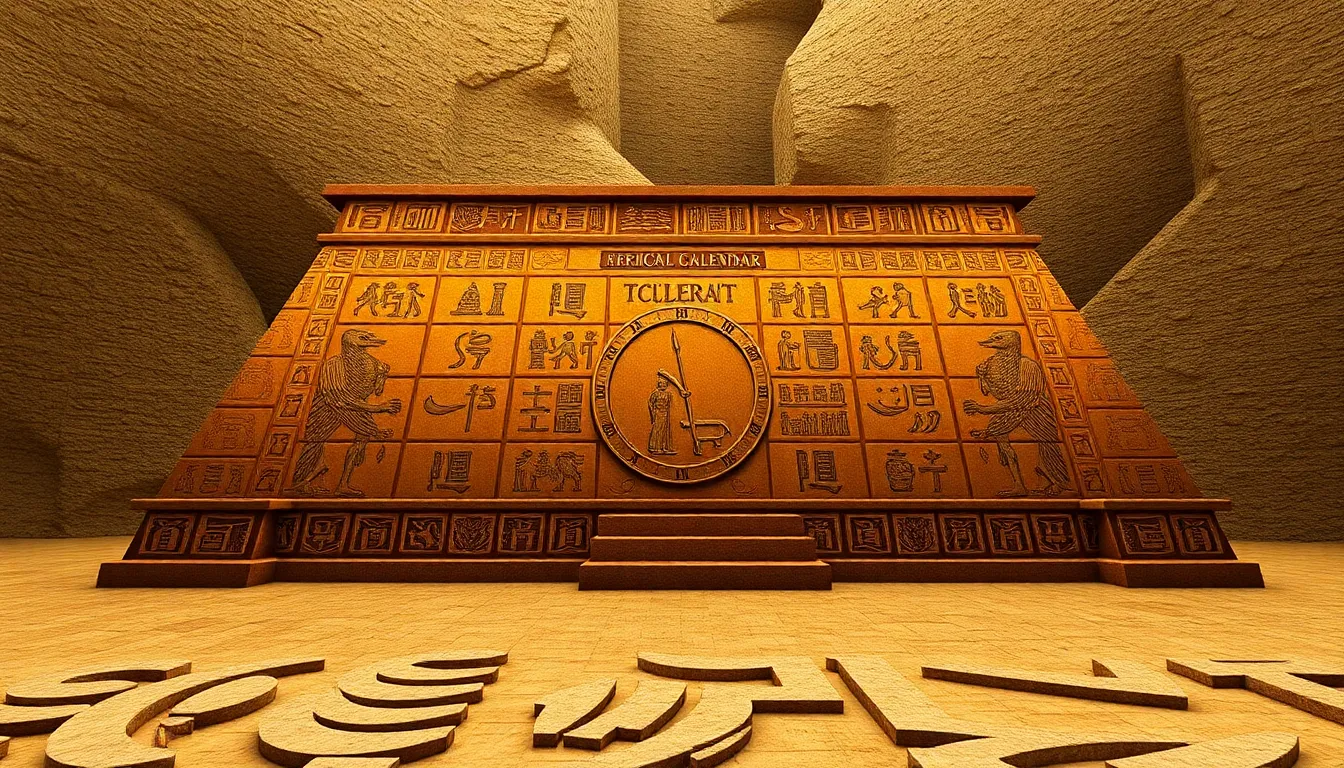The Egyptian Calendar: Time and Religious Festivals
I. Introduction to the Egyptian Calendar
The Egyptian calendar played a pivotal role in ancient Egyptian culture, serving not only as a means of tracking time but also as a framework within which religious festivals and agricultural activities were organized. The Egyptians had a profound understanding of the cyclical nature of time, which was closely linked to their agricultural practices and the inundation of the Nile.
Timekeeping was essential in ancient Egypt, primarily due to the agrarian lifestyle that depended on the seasonal flooding of the Nile River. This flooding was crucial for replenishing the soil and ensuring bountiful harvests, thus making the calendar a vital tool for their survival and prosperity.
II. Structure of the Egyptian Calendar
The Egyptian calendar was structured around three main seasons:
- Inundation (Akhet) – This season marked the annual flooding of the Nile, which typically occurred from June to September.
- Emergence (Peret) – This season lasted from October to January, during which the waters receded, exposing fertile land for planting.
- Drought (Shemu) – From February to May, this season was characterized by the dry conditions leading up to the next inundation.
The year was divided into 12 months, with each month consisting of 30 days. The months were named as follows:
- Thoth
- Paopi
- Hathor
- Choiak
- Tybi
- Mekhir
- Pachons
- Pamenot
- Mesore
- Peret
- Semou
- Akhet
In addition to the 360 days, the Egyptians added five intercalary days, known as the epagomenal days, at the end of the year to align their calendar with the solar year.
III. Major Religious Festivals in Ancient Egypt
Festivals in ancient Egypt were deeply intertwined with religious practices, serving as important occasions for worship, celebration, and community bonding. Some of the most significant festivals included:
- The Opet Festival – This festival was celebrated in Thebes and marked the annual flooding of the Nile. It involved a grand procession of the statue of Amun from Karnak to Luxor, accompanied by music, dancing, and feasting.
- The Wepet-Renpet – Known as the New Year festival, it celebrated the rejuvenation of life and the arrival of the inundation. It was a time for reflection and renewal, often featuring rituals to honor the gods.
IV. Seasonal Festivals and Agricultural Cycles
The Nile River was the lifeblood of ancient Egyptian agriculture, and its annual flooding dictated the agricultural calendar. The following festivals were closely linked to the agricultural cycles:
- Planting Festivals – As the waters receded during the Emergence season, festivals were held to celebrate the planting of seeds and the beginning of the agricultural year.
- The Shemu Festival – Celebrated during the Drought season, this festival honored the harvest and involved offerings to deities for a successful crop yield.
V. Religious Significance of the Calendar
The Egyptian calendar significantly influenced religious rituals, as many festivals were synchronized with celestial events such as the heliacal rising of Sirius, which heralded the inundation. This synchronization emphasized the connection between the divine and the natural world.
Deities played a crucial role in the calendar system, with various gods and goddesses associated with specific months and seasons. For example:
- Osiris – Associated with the harvest and fertility.
- Amun – Revered during the Opet Festival.
VI. The Impact of the Egyptian Calendar on Daily Life
The Egyptian calendar facilitated effective time management within ancient Egyptian society. It allowed for the organization of work, religious observances, and social activities:
- Time Management – Farmers relied on the calendar to determine the best times for planting and harvesting.
- Social Structure – The calendar influenced social hierarchies, with priests often taking on significant roles in the administration of festivals and rituals.
- Trade and Economy – Knowing the seasons helped traders plan their routes and schedules, impacting economic activities.
VII. Legacy of the Egyptian Calendar
The Egyptian calendar has left a lasting legacy, influencing later civilizations and their timekeeping methods. Its structure and festivals were adopted and adapted by various cultures throughout history.
Today, remnants of the Egyptian calendar can still be observed in modern adaptations, as well as in the preservation of traditional festivals in contemporary Egyptian culture. Events that celebrate the Nile and agricultural cycles continue to hold cultural significance.
VIII. Conclusion
In summary, the Egyptian calendar was a cornerstone of ancient Egyptian civilization, reflecting the intricate relationship between time, agriculture, and religion. It encapsulated the cyclical nature of life and the importance of the Nile, while also serving as a guide for social and economic activities.
The enduring legacy of the Egyptian calendar is a testament to its significance, not only in ancient times but also in its influence on modern practices and celebrations. The calendar serves as a reminder of the deep connection between humanity and the rhythms of nature, a theme that resonates through the ages.




